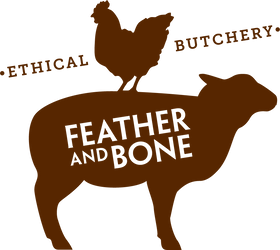Drought report: South Hill Farm, November 2018
As the extreme weather across the country continues, the air waves are choked with heartbreaking stories of farmers brought to their knees and struggling to cope. From the city, it's hard to get a clear perspective on the scale of hardship, the causes and the possible solutions. So last November, in response to media reports of farms in crisis due to the drought, we decided to seek some perspective from the farmers with whom we work. Before you read their reports, we'd encourage you to read our introduction - 'Grass roots response to drought'.
We’ve checked in with all of the farms over the last month and it’s sobering to note that little has changed since November 2018.
South Hill Farm
Farmer: Clara Bateman
Location: Wildes Meadow, NSW, 2577
Produce: Black Angus cattle
We started buying Clara’s beef and vealer cows in August 2010
12 November 2018
When did you start to realise that this drought would probably be prolonged and very serious? When did you start to take mitigating action against this drought?
In our area normal average rainfall is about 1500 mls per year.
2015: 1870mls (April 488.5 over 4 days, August 491.7 over 3 days)
2016: 1149.35 (June 411.20 over two days)
2017: 1231.24 (March 561.20 over two days)
2018: to the end of October only 596.44, a third of the average annual.
On my farm, with its well-draining red basalt soils, what is needed by nature is a fairly constant drip feed of moisture throughout the year, with an emphasis on a spring break in September, and an autumn break in February.
We get huge rain dumps as shown above and, although they are good for keeping dams full, they do nothing for good pasture in soils that are very free draining. In fact, the heavy rain drives the soil mineral profile I have worked so hard to build up over 22 years below the pasture root level of even my most hardy perennial grasses (some down as far as 2 metres). This in turn affects the health of the stock because those minerals aren’t available for the plants to absorb them and, in turn, make them available to the stock. I have to be extra observant of their welfare and always leave out good mineral blocks to make up for what they are missing in their diet.
We knew when we bought this property that red basalt contained little organic matter, which helps the soil to retain moisture. So we implemented a rotational programme of "spelling" paddocks when times are good, letting the grasses grow to senescence, about 2-3 months and at least waist high and browned off, but full of seed.
Then the cattle are let in, just for 24 hours, in discreet areas. They eat, drink, trample, wee and poo and then are moved on to the next patch. Their activity builds up material that ferments back into the soil and builds up organic matter, thereby water retention. This process over decades has increased our water retention in the soil to the point that any rain during tough times will be held available for pasture growth.
The pasture response to any rain we have had this year is testament to that fact. This practice is not followed by other traditional farmers in the area and the results are plain to see.
What are the main actions you’ve taken and strategies you’ve followed? What are your priorities during this period and what are your objectives (e.g. maintain a core breeding stock, maintain ground cover etc.)?
As our rainfall has become less predictable I have slowly de-stocked. In 2015 I was carrying 36 breeders. I now carry 26.
Have you witnessed or learned anything particular over the last year that has changed or reinforced your thinking?
The farm's ability to recover after such a poor rainfall year has more than ever convinced me that I am on the right track. I have really great pasture at the moment due to a spring break in September of 104.4 ml. Many people have said to me ‘buy in stock to fatten and sell on’. But I feel that the conservative approach I have taken will continue to shield me better during further weather depradations. We are forecast to have a very hot dry summer.
How would you describe what you do and the contribution you make to Australian agriculture?
My farm is situated in one of the most fertile areas of the country. I try, by example, to show that conservative methods of land management can work.
What do you think the ‘City' - consumers, retailers, policy makers - should be doing in times of drought?
Consumers need to understand that farming is a science, that it is hard but rewarding work and that they should be paying the true price for what farmers produce. No more cheap milk!
Postscript 8 March 2019
Needless to say the Southern highlands are like a desert again! My place is holding up pretty well, thanks to some rain in November and December last year. But the total for the year was 901 ml. Well down on average.
Since then our normal storm season in Jan-Feb just didn't eventuate. So only 90 mls to date. I have only cut my lawn twice this whole summer!
I am very glad to be holding fewer breeding cows going in to this autumn.





How is this farm doing now? After further drought/fires late 19/ early 20?
This article is incredible, well done f&b team,
Thank you,
How is this farm doing now? After further drought/fires late 19/ early 20?
This article is incredible, well done f&b team,
Thank you,
I’m loving these stories even though they are difficult times. People managing the land in these extraordinary circumstances; their strategies, observations, thinking and decisions. Great work and hang in there.
Leave a comment